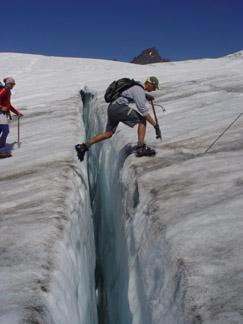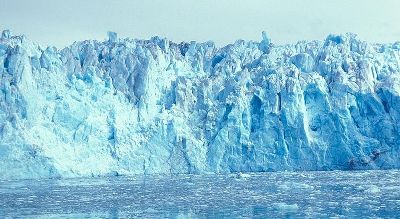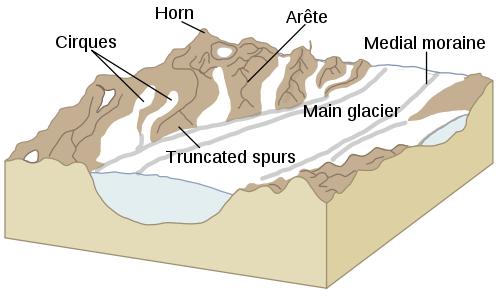Glacier Features
- Ablation zone - The ablation zone is the area below the accumulation zone where the glacial ice exists. In this area there is a loss in ice mass due to ablation such as melting and evaporation.
- Accumulation zone - This is the area of the glacier where snow falls and accumulates. It is located above the ablation zone. It is separated from the ablation zone by the equilibrium line.
- Crevasses - Crevasses are giant cracks that occur on the surface of glaciers typically where the glacier flows the fastest.
- Firn - Firn is a type of compacted snow that lies between the new snow and the glacial ice.
- Head - The glacier head is where the glacier starts.
- Terminus - The terminus is the end of the glacier. It is also called the glacier foot.
|

A glacier crevasse |


